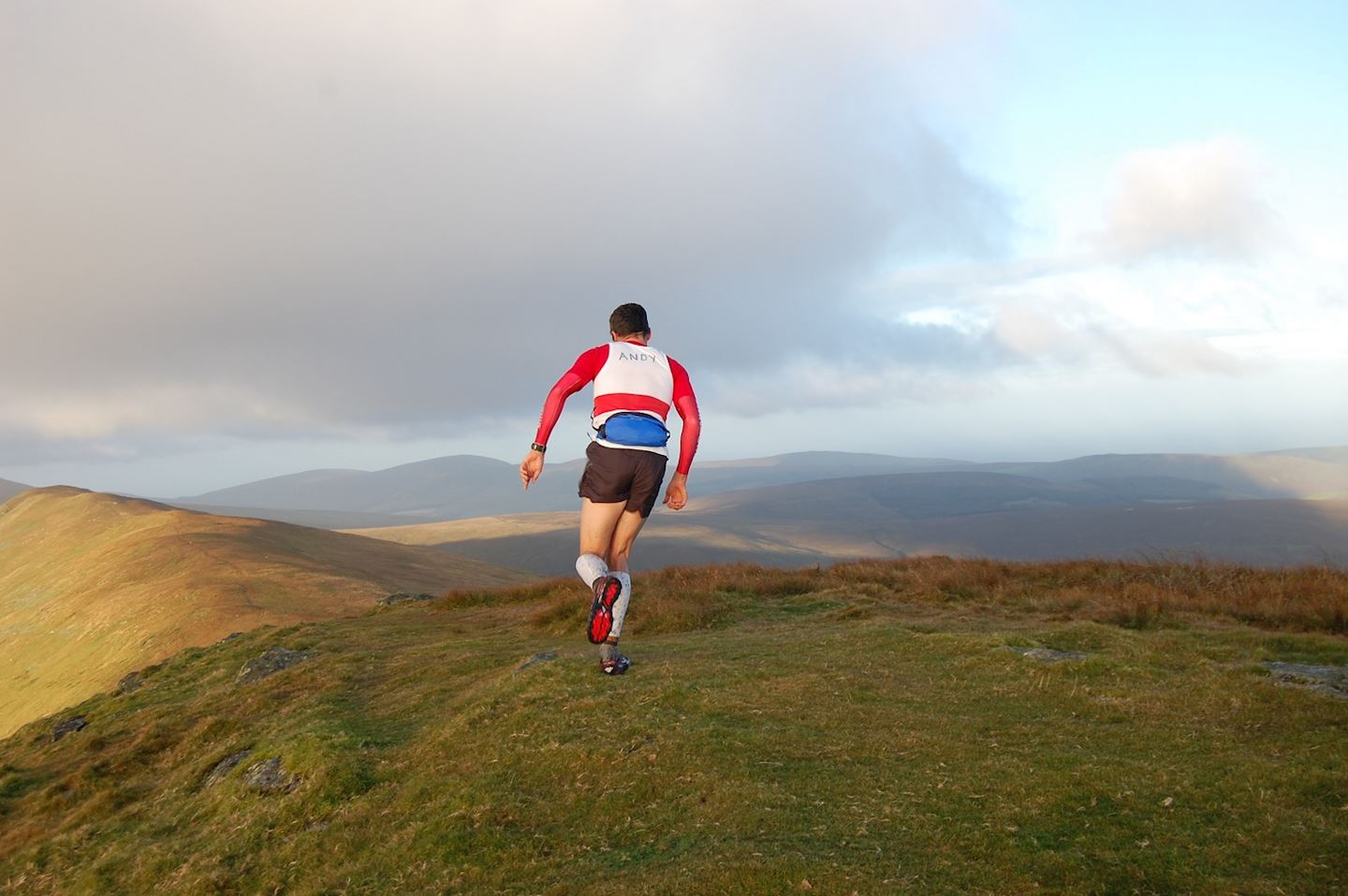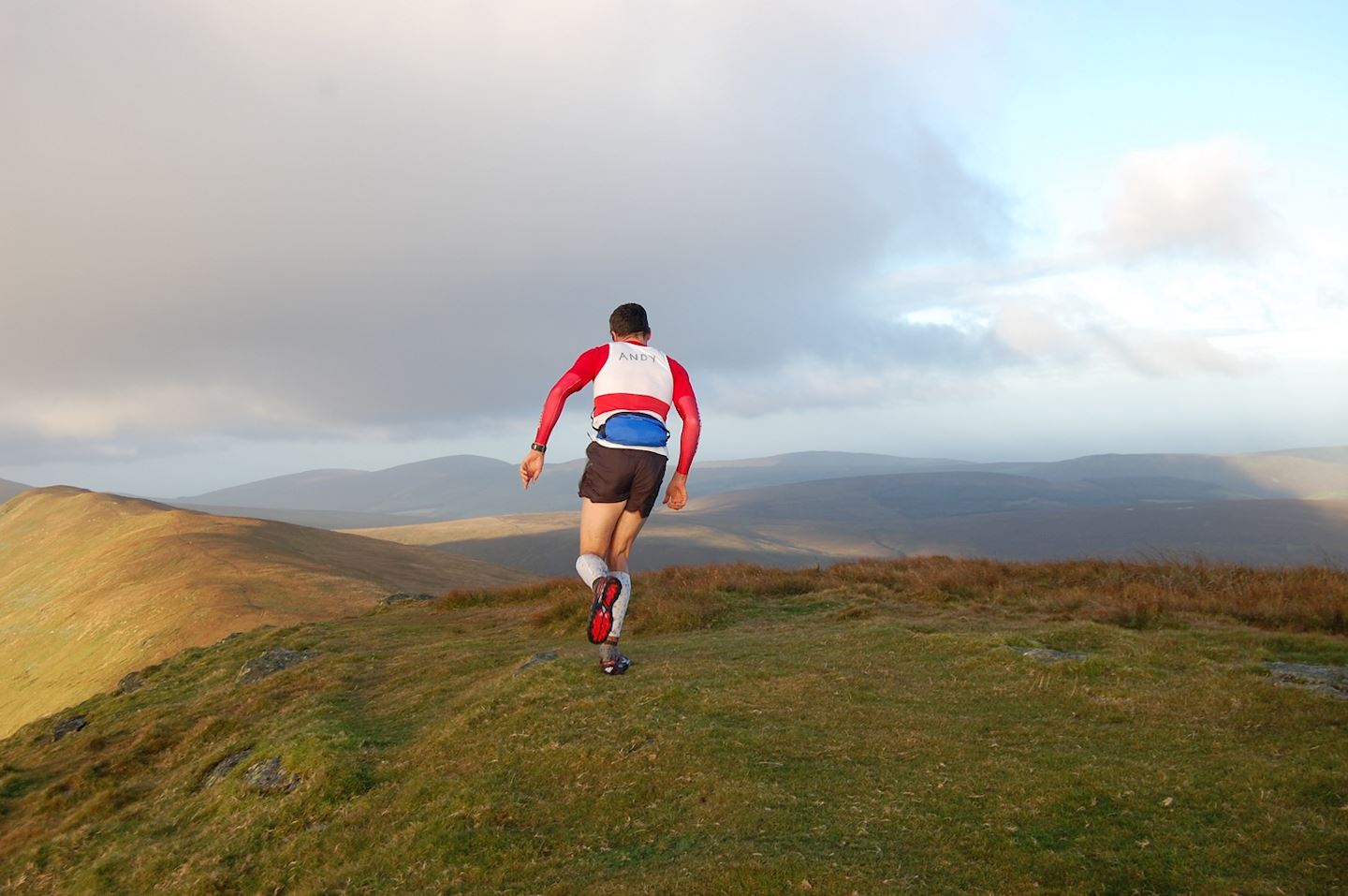Manx Mountain Marathon & Half Manx Mountain Marathon



Join Manx Mountain Marathon & Half Manx Mountain Marathon
The route was devised by Celtic scholar George Broderick in 1966. George had the idea of walking over the hills from Ramsey in the north of the island to port Erin in the south, beginning and ending at the town’s youth hostels.
The initial challenge was to complete the distance in under 10 hours, and in 1968 Tony Paine of East Grinstead made it to port Erin youth hostel nine hours and fifty minutes after setting out from Ramsey. Once the challenge had been proven possible, George Broderick held discussions with the various bodies to try and organise a race for the following year. Unfortunately Easter 1969 proved too much of a rush, so it was agreed Easter 1970 would be the first running of the challenge.
May and Bill Lloyd, the wardens at Port Erin Youth Hostel, had an old trophy that they found lying in a cupboard, and, after a good polish, they presented it for the winner. The Lloyd trophy is still the premier award 33 years on.
74 entries set off in the inaugural race in arctic weather conditions. At one point the organisers were going to cancel the event but the competitors were all keen to go. Due to the pace of the runners who had entered the leaders arrived in port Erin ahead of the expected schedule. The timekeeper had not arrived but luckily the wardens from the YMCA were there to record the winning time but only to the nearest minute. Only 12 competitors out of the 74 entries made it to the finish as the blizzard conditions forced the majority of the field to retire.
In 1972 the start was moved to Ramsey’s market square and the finish to Bradda Glen Café.
In 1973 the infamous climb at Fleshwick and Milner’s tower were included, previously the route went via Surby and Bradda East. Joss Naylor won for a second time although there was controversy as he did not ascend the climb at Fleshwick!
Three classes with different starting times were introduced in 1974, elite for runners under 6 hours, standard 6 to 7½ hours and walkers (although they were allowed to run), 7½ to 10½ hours.
In 1977 Arthur Jones who had competed in several of the marathons took over as race secretary, a position he would hold with great distinction for 20 years.
There were route changes in 1987. Greeba summit was included instead of descending through the Beary. Road sections at the Bungalow, St Johns and Round Table were made off road and the decent of Fleshwick followed the coastal path to the beach instead of cutting across a field.
In 1998 the course was lengthened in the Slieau Whallian area and the finish was moved to the Cherry Orchard Hotel.
In 2000 the elite and standard class were combined and the course length was reduced in the Greeba area and the finish in Port Erin moved to the Ocean Castle Hotel. Robert Baxter became the first veteran over 70 to complete the marathon, his 24th finish.
In 2003 history was made when Ian Gale became the first local to win.
In 2005 Jolanda Linshooten from Holland became the first continental runner to win a category when she finished first lady.
In 2007 Lloyd Taggart became the second Manxman to win setting a course best time. The race is included in the UK ultra-running championships for the first time.
In 2011 Paul Thompson wins for the seventh time.
In 2012 the ascent of Lhiattne Ny Beinnee was introduced and the win was taken again by Lloyd Taggart. A relay event was trialled successfully, and may be re-incorporated in future mountain ultra events.
2013 seen a new chapter in the races history with route changes to remove the main road section, new sponsor up and running (IOM), rebranding of the main event towards ultra distance athletes, and a new race “IOM Mountain Race” from Ramsey to St Johns to introduce a tough long fell race catering for those who may find the ultra just a bit too demanding!
The 2014 mountain race reverted to a course very similar to the previous Half Manx Mountain Marathon along the latter half of the ultra route, therefore also avoiding the road section toward South Barrule
In 2017 the event reverted to it’s original name – Manx Mountain Marathon.
In 2018 the event moved back to it’s traditional Easter Saturday slot.
ALL COMPETITORS MUST START THE RACE CARRYING ALL OF THE FOLLOWING EQUIPMENT AND CARRY IT WITH THEM FOR THE DURATION OF THE RACE:
EMERGENCY FOOD RATION (NOT REQUIRED FOR CHECK AT FINISH)WHISTLEMAP AND COMPASS SUITABLE FOR NAVIGATING THE COURSEOTHER BODY COVER APPROPRIATE FOR THE WEATHER CONDITIONS (I.E. THERMAL BASE LAYER)WATERPROOF WHOLE BODY COVER (TAPED SEAMS, HAT, GLOVES)
EQUIPMENT CHECKS WILL BE TAKEN AT THE START, DURING THE RACE AND THE FINISH. THIS RULE WILL BE STRICTLY ENFORCED AND ANY COMPETITOR FOUND NOT TO BE IN FULL COMPLIANCE WILL AUTOMATICALLY BE DISQUALIFIED.
Reviews
Be the first to write a review for this event
The race information has been found on the official website of the event or through publicly available sources. Always refer to the official website the latest race information. Please let us know if any data is wrong or missing, by emailing us.











